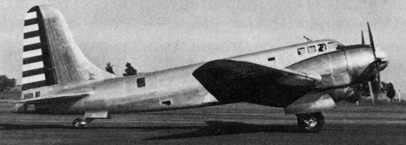Douglas B-23 Dragon


In an attempt to rectify the shortcomings of their DB-1 design, the Douglas team developed an improved version of the aircraft in 1938. The USAAC awarded a contract for this new design under the designation B-23 Dragon. First flown in July 1939, the 33 examples of the B-23 proved to have disappointing performance and flight characteristics. As a result the Dragon saw only limited service in a patrol capacity before being relegated to training duties. Twelve examples were later modified as utility transports (as VC-67s), and were also used as glider tugs.
For more data on this aircraft, click
here
for Joe Baugher's webpage.
USAF archives on this aircraft, click
here.
Additional information on this aircraft
can be found at Wikipedia
here.
(updated February 2009)
Douglas B-23 Dragon
Type: medium bomber Crew: 4-5 Armament: one 0.50 inch machine gun three 0.30 inch machine guns Specifications: Length: 58' 4" (17.78 m) Height: 18' 6" (5.64 m) Wingspan: 92' 0" (28.04 m) Wing area: 993 sq. ft (92.25 sq. m) Empty Weight: 19,059 lb (8645 kg) Max Weight: 30,475 lb (13,823 kg) max at takeoff Propulsion: No. of Engines: 2 Powerplant: Wright R-2600-3 Cyclone 14 radial Horsepower: 1600 hp each Performance: Range: 1455 miles (2342 km) Cruise Speed: (not listed) Max Speed: 282 mph ( 454 km/h) at 12000 ft Ceiling: 31,600 ft (9630 m)
If this page does not have a navigational frame on the left, click HERE to see the rest of the website.